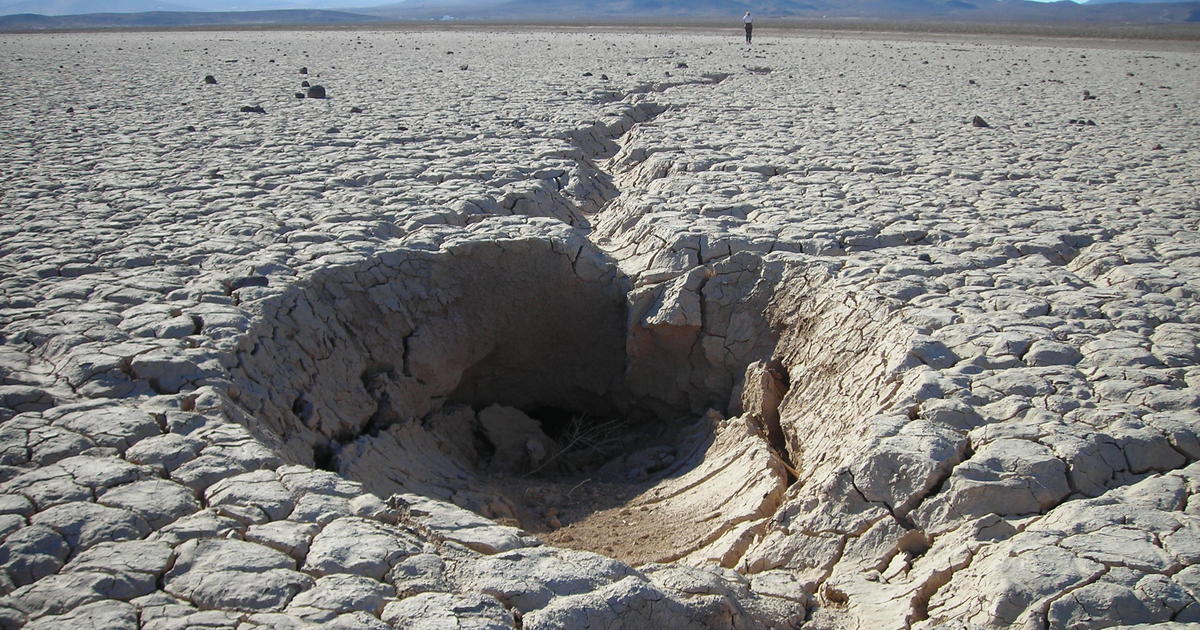Land subsidence in Iran is way too close to a perilous point to be compared to the global standard set by international land subsidence associations, a senior environment official at the Department of Environment said.
According to Mohammad Darvish, head of Public Participation Office at the Department of Environment, the phenomenon in the country has already reached 140 times the global standard of annually 4mm of land settling. Land subsidence is defined by scientific references as a gradual settling or sudden sinking of the earth's surface owing to subsurface movement of earth materials.
Principal causes are aquifer-system compaction, drainage of organic soils, underground mining, hydrocompaction, natural compaction, gas and oil extraction as well as earthquake. In more humid areas underlain by soluble rocks such as limestone, gypsum or salt, land subsidence is an often overlooked environmental consequence of land- and water-use practices.
Main Culprit
However, in Iran the reason for most cases is injudicious ground water extraction, according to Darvish. He added that the growing use of land and water resources will most likely exacerbate existing problems and give rise to new ones.
"Water exploitation has been banned in almost two-thirds of the country's area, for the water level in those areas has fallen to over 2m below the minimum level."
Darvish who is also a researcher at the Research Institute for Forests and Rangelands said Iran has broken the global record for land subsidence twice since the beginning of the 21st century.
"The deepest subsidence happened in the US state of New Mexico at 32cm. however, in 2010 in Tehran and later in 2015 in Fars Province the earth sank by 36cm and 54cm respectively to break the record", the official said.
Darvish named many provinces, including Hamedan, Markazi, Tehran, Qazvin, Isfahan, Fars, Kerman, Sistan-Baluchestan, Hormozgan as well as South and North Khorasan and Khorasan Razavi, among those severely struggling with the phenomenon. Reportedly, Fars Province has the worst condition of all, since almost all wetlands and lakes have dried up causing an annual 54cm of land subsidence, based on the figures released in 2016 by Geological Survey & Mineral Explorations of Iran.
Less than the record number, but still alarming is the 36cm-subsidence in Moeinabad and the 25cm settling in Varamin to the south of Tehran. Furthermore, the land has sunk 20cm in Tus plain in Khorasan Razavi Province, Darvish added.
Urban Heat Islands
On the rise in suburban areas, especially in the capital's surrounding areas, is the issue of Urban Heat Islands (UHI), which plays a rather important role in triggering land subsidence.
A UHI is an area significantly warmer than its surrounding areas due to human activities. The islands' weather condition resembles the climate of a desert. According to Darvish, the desert climate forces farmers to use more water to dampen their farmlands in order to preserve their crops.
"This puts more stress on underground water resources and consequently the occurrence of land subsidence."
As the UHI is created thanks to excessive burning of fossil fuels, the phenomenon is growing around the metropolises like Tehran, Isfahan, Tabriz, Shiraz, Arak and Ahvaz, the official added.
Inefficient Water Management
So far, surface water management policies have produced negative results in most cases for they have not been scientifically studied. Darvish said surface water streams should be controlled through dam construction and other methods in a way that they can both help irrigate vegetation in drier lands and replenish groundwater reserves. However, the interventions have so far been unmethodical in most cases except for a few projects near the Karaj dam.
Remedial Suggestions
Although reversing land subsidence is almost impossible, slowing its progress is attainable provided officials and the public cooperate. Darvish suggested water usage control by people and renovation of irrigation techniques in agriculture as the key to addressing the growing problem.
Furthermore, water-intensive industries should be tactfully managed, he noted. The government, he said, can play a major role in raising awareness about water scarcity. "Industries, farmers and urban residents use fresh water almost for free, and that is why they do not even try to control their consumption."
Exerting some pressure on high-consuming sectors to cut down on their usage can be a step toward achieving the goal, he added. Curbing the spread of land subsidence is of utmost importance. When the ground surface moves lower, the entire city sinks with it, which will affect the stability of buildings and the functionality of infrastructures.


